Global Aviation, Defense, and Space Market - Comprehensive Data-Driven Market Analysis & Strategic Outlook
- Global aviation, defense, and space market valued at approximately USD 709.2 billion in 2025, growing at a CAGR of around 3.4% through 2032, with potential to exceed USD 896.6 billion.
- Aircraft account for a market share of 70.1% in 2024, driving innovation and expanding applications through intense research.
- Key trends driving growth: Rising global defense budgets and military modernization programs, Increasing demand for commercial air travel and aircraft production
- Opportunities include: Expanding private sector investments in space exploration create new growth avenues
- Key insight: The market is set to grow exponentially in value over the next decade, highlighting significant growth opportunities.
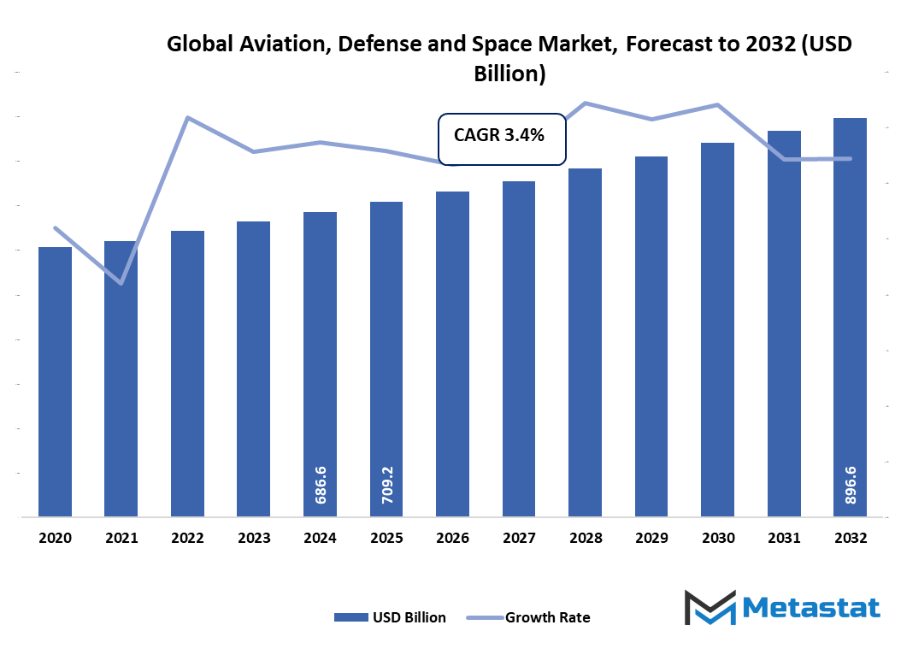
Market Background & Overview
The global aviation, defense, and space market will be a vibrant example of one of the most innovative and strategically essential sectors in the world, involving the creation, the manufacture, and the integration of the technologies that would allow us to fly, conduct military operations, and explore the space beyond the earth. This market will unify the civil aviation infrastructure, the military defense systems, and commercial and government-led space missions, the landscape that will be a driver for global connectivity, national security, and technological innovation.
With regard to the aviation branch, the market will be filled with aircraft production, maintenance, air traffic systems, and other services that will keep passenger and cargo transportation safe and efficient. Defense will be about advanced weaponry, cybersecurity solutions, unmanned vehicles, intelligence platforms, and mission support that will be the technologies required to implement security strategies for the country. The space division will be radicalized with the making of satellites, sending services, programs for the exploration of planets, and new private initiatives whose target is the commercialization of low-Earth orbit and beyond.
Cross-sector collaboration will still be a major factor in shaping the Global Market for aviation, defense, and space, co-investment scenarios where breakthroughs in materials, AI, propulsion systems, and digital engineering change the concept of performance of the standards of the market. This market will not simply be a provider of products or services but rather function as a strategic facilitator for global strategies, scientific advancement, and infrastructure that would be future-ready and that is capable of having a ripple effect on the global economies, communication systems, and security framework.
Market Segmentation Analysis
The global aviation, defense, and space market is mainly classified based on Platform, Application, Technology, End Use.
By Platform is further segmented into:
- Aircraft: The aircraft sector, both traditional and advanced, continues to be one of the core segments of the global aviation, defense, and space market. Innovations in fuel efficiency, composite materials, and avionics will sustain and extend the aircrafts' performance, reduce the environmental footprint, and enhanve the passenger safety will thereby ensuring the growth of both commercial and military aviation sectors.
- Spacecraft: The spacecraft market is to accelerate substantially with the growth of interest in satellite deployment, exploration missions, and space tourism. The advancements in reusable launch vehicles, modular spacecraft, and light materials will become the source of efficiency and open up new possibilities for scientific, commercial and defense applications worldwide.
- Drones: The role of drones as one of the growing segments of the global aviation, defense, and space market is widening with its application from surveillance and reconnaissance to delivery and disaster management. The future of development includes AI-based autonomous operations, better battery life, and increased payload capacity for both defense and commercial uses.
- Missiles: Missile systems are still one of the essential segments in defense operations and will continue to be so. The inventions in precision guidance, propulsion system, and stealth technologies will lead to the better performance, accuracy, and operational safety of missile systems which will, hence, assure continuous investments from military organizations in advanced missile development and deployment strategies globally.
By Application the market is divided into:
- Military Aviation: Military aviation is the main source of demand for high-tech aircraft, drones, and defense technologies. The afterward investments will target extensively on stealth capabilities, electronic warfare systems, and next-generation fighter jets so as to contribute to the military's operational readiness and enable it to prevail on the global defense market.
- Commercial Aviation: Commercial aviation is developing more because of the increased number of passengers and cargo demand. The fuel-efficient aircraft, digital avionics, and lightweight materials will not only improve performance and lower emissions but will also bring about the optimization of operational costs, thus encouraging the spread of usage in the mature and the emerging markets.
- Space Exploration: Space exploration is an ever-expanding application in the global aviation, defense, and space market, primarily driven by the launching of satellites, the performance of planetary missions besides, and private space flights. The rise of reusable launch vehicles, developments in the modularity of spacecraft, and the forging of international partnerships will inevitably empower and reshape space trades applying suitable public and private research.
- Defense Systems: Defense systems include integrated air, land, and missile defense platforms. Advanced radar, missile interception technologies, and autonomous defense solutions will drive growth, enabling governments to strengthen national security and support strategic global operations efficiently.
By Technology the market is further divided into:
- Aerospace Technologies: The main goal of aerospace technologies is the research and development of the needed materials, avionics, and propulsion systems that will make one fuel-efficient and lightweight with the use of composites and digital control systems in aircraft and spacecraft.
- Defense Technologies: The category of defense technologies mainly consists of the implementation of missile systems, the development of highly secured data transmission systems, the installation of faulty disrupting systems, and lately the employment of AI-based tactics. In the future, most of the work on defense technologies will be on the creation of automated platforms, the application of AI for better bracket force targeting, and the making of platforms secured against cyber-attacks which will, in turn, increase the operational efficiency and strategic capabilities of military organizations worldwide.
- Satellite Technologies: Satellite technologies are rapidly expanding in the global aviation, defense, and space market where they play a vital role in communication, navigation, and earth observation. Their government and private sectors will adopt more of them for scientific and commercial applications as miniaturization, enhanced data processing, and longer operational life take place.
By End Use the global aviation, defense, and space market is divided as:
- Government: Until now, government organizations are the biggest consumers of the aviation, defense, and space technologies, as they heavily invest in national security, military operations, and space exploration programs. There will be a continuous rise in the segment due to strategic alliances, capital injections, and research grants.
- Private Sector: The volatility of the private sector is increasingly characterizing the participation of the aerospace and space markets, which is from commercial aviation to satellite deployment. The innovations in cost-effective launch systems, private space travel, and drone services are expanding the company's new business opportunities and making revenue streams available.
- Research and Development: R&D projects provide a lot of support in the development of aerospace, defense, and space technologies. The investments in testing, prototyping, and experimental technologies foster the creation of the next generation of aircraft, spacecraft, drones, and defense solutions, hence influencing the global market's future trajectory
|
Forecast Period |
2025-2032 |
|
Market Size in 2025 |
$709.2 Billion |
|
Market Size by 2032 |
$896.6 Billion |
|
Growth Rate from 2025 to 2032 |
3.4% |
|
Base Year |
2024 |
|
Regions Covered |
North America, Europe, Asia-Pacific, South America, Middle East & Africa |
By Region:
The global aviation, defense, and space market will showcase quite a large variety of regional differences that will be mainly due to the technological infrastructure, defense priorities, and aerospace development initiatives. The U.S., Canada, and Mexico, which make up the North America, will still be the top spot with their already mature aerospace manufacturing capabilities, the big investments in the defense sphere, and the well-developed civil aviation networks. In the area, the focus of resources both from private companies as well as public entities will be concentrated on the production of next-generation aircraft and defense systems as well as the space exploration program, thus a worldwide lead in innovation and operational excellence will be maintained.
The United Kingdom, Germany, France, Italy, and the rest of the continent, which constitute Europe, will be concentrating on precision engineering, complying with regulations, and innovation in the field of sustainable aviation. In this area, there will be a steady rise of defense modernization programs, the renovation of the aviation sector, and the launching of joint space missions through government-to-government partnerships. On the one hand, highly advanced research institutions will be the main players in the performance improvements of the aerospace sector, on the other hand, large aerospace companies will ensure the maintenance of the standards of safety and environmental care through the alignment of their operations with the most stringent norms.
India, China, Japan, South Korea, and the rest of the countries that form the Asia-Pacific region, will become an active market for this industry thanks to the region's rapid industrialization, ever-increasing defense budgets, and vast-space ventures. South America, with Brazil and Argentina at its forefront, will be on its way to gradually gaining capabilities in the aerospace and defense sectors that will be helpful in meeting both the regional transportation and national security objectives. The Middle East & Africa, which includes the GCC countries, Egypt, and South Africa, will certainly be the areas that will have to face the most operational challenges due to their geographical location and this is the reason why they are going to make huge investments in different aspects of aviation such as infrastructure, defense and satellite, so that they can overcome these problems. The global aviation, defense, and space market across all regions will be turning to the use of technology as the driver of change, to conducting business through strategic partnerships rather than traditional ways, and even going above and beyond by embracing eco-friendly measures, thus further committing itself to innovation, security, and exploration on a global scale.
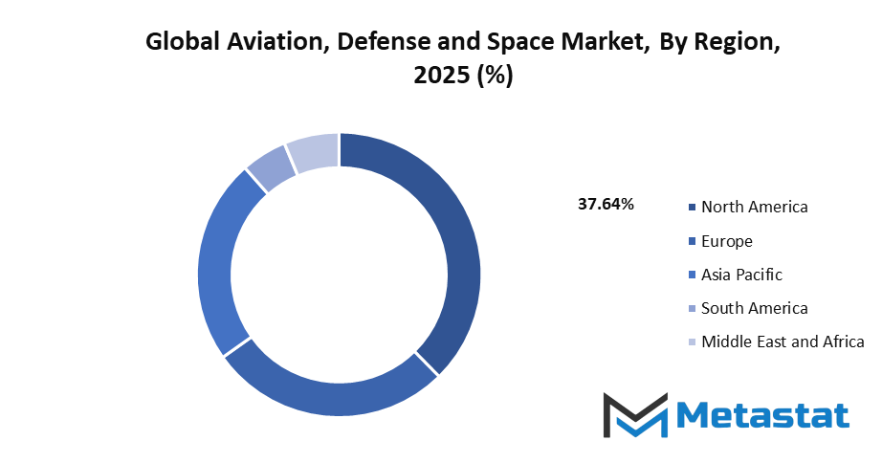
Market Dynamics
Growth Drivers:
- Rising global defense budgets and military modernization programs: One of the main factors that contribute to the global aviation, defense, and space market is the increasing global defense budgets and military modernization programs. The investments made in the next-generation aircraft, missile systems, and defense technologies are augmenting the capabilities, while fleet upgrades are enhancing operational efficiency and strategic readiness for countries all over the world.
- Increasing demand for commercial air travel and aircraft production: Along with this, the global aviation, defense, and space market is supported by the increasing demand for commercial air travel and aircraft production. Airlines are buying fuel-efficient and highly technological aircraft to cope with rising passenger traffic, and thus, manufacturers are taking the advantage of the higher production volumes and continuous technological innovation in aviation systems and components.
Restraints & Challenges:
- High R&D costs and long development cycles hinder market growth: High R&D costs and extended development periods slow down the global aviation, defense, and space market. The process of designing advanced aircraft, spacecraft, and defense technologies and requirements for such products is costly and lengthy by nature, which consequently delays the introduction of new products into the market and limits their fast utilization in emerging markets.
- Stringent regulatory and safety compliance requirements: Tight and precise regulatory and safety requirements give rise to difficulties in the global aviation, defense, and space market. Acquisitions, environmental rules, and intercontinental safety norms are steps that heighten the intricacy of the development process, add new duties like testing, and lead to the withholding of the new technology particularly in commercial aviation and space sectors.
Opportunities:
- Expanding private sector investments in space exploration create new growth avenues: Deepening private sector interest in space exploration has been creating new ways of growth in the global aviation, defense, and space market. Breakthroughs in reusable launch systems, satellite technologies, and commercial space travel have not only made new businesses, partnerships, and revenue streams possible, but also have been enabling the rapid pace of technological advancement in the aerospace and defense sectors.
Competitive Landscape & Strategic Insights
global aviation, defense, and space market will find the defining features as events of dialogue between the existing multinational corporations and the new regional players which leads to the environment of intense competition and high-level innovation. Big guns of the industry like Leonardo, Airbus, Rolls Royce, Lockheed Martin, Rheinmetall, Safran, General Dynamics, L3Harris Technologies, Boeing, Textron, Honeywell, Northrop Grumman, Raytheon Technologies, BAE Systems, and the Thales Group will stay at the forefront of this trend and will be mainly responsible for the market resulting from ultra-modern aerospace engineering, next generation defense technologies, and total space exploration solutions. The powerhouses will combine far-reaching research strengths, a worldwide production network, and strategic alliances, not only to maintain their technological leadership but also to retain the dominance of their organization.
The competition from regional and specialized companies will add the element of diversity to the market even more as they provide solutions that are more focused on progression and, obviously, in line with the changing needs of defense, aviation, and space fields. Being small, they will have the advantage of easily adapting to new technologies such as localized production and developing niche services that perfectly match the unique operational challenges of their customers. The development of the propulsion system, the electrification of the airplane, and satellite technology will be some of the innovation techniques that both global and local players will use to stay ahead of their competitors.
Future market dynamics will be influenced greatly by technological integration, cross-sector collaboration, and sustainable practices as per the strategic insights. They will become more and more dependent on the utilization of data analytics, as well as employing simulation models and advanced manufacturing techniques to boost performance, cut down costs, and meet the increasingly demanding regulative standards. global aviation, defense, and space market will not only be able to expand its capabilities but will also be able to provide solutions that are both technologically and operationally advanced, that is, long term growth, support for national security, and the stability of global connectivity and space exploration efforts, among others.
Forecast & Future Outlook
- Short-Term (1–2 Years): Recovery from COVID-19 disruptions with renewed testing demand as healthcare providers emphasize metabolic risk monitoring.
- Mid-Term (3–5 Years): Greater automation and multiplex assay adoption improve throughput and cost efficiency, increasing clinical adoption.
- Long-Term (6–10 Years): Potential integration into routine metabolic screening programs globally, supported by replacement of conventional tests with advanced biomarker panels.
Market size is forecast to rise from USD 709.2 billion in 2025 to over USD 896.6 billion by 2032. Aviation, Defense, and Space will maintain dominance but face growing competition from emerging formats.
To sum up, the global aviation, defense, and space market will be recognized as one of the key factors responsible for the global spread of the technical and strategic capabilities. The combination of the three sectors' innovations in aerospace engineering, defense systems, and space exploration will result the industry to go on to redraw the limits of mobility, security, and space research in the whole world. The era of the future will see the industry refining its capabilities to the point where precision, efficiency, and resilience would be the hallmark of all aviation networks, defense mechanisms, and space initiatives. The changes in the market will thus be instrumental in ensuring both the infrastructural and operational readiness, as well as in extending the boundaries of international collaboration, economic growth, and scientific and technological advances of the future.
Report Coverage
This research report categorizes the global aviation, defense, and space market based on various segments and regions, forecasts revenue growth, and analyzes trends in each submarket. The report analyses the key growth drivers, opportunities, and challenges influencing the global aviation, defense, and space market. Recent market developments and competitive strategies such as expansion, type launch, development, partnership, merger, and acquisition have been included to draw the competitive landscape in the market. The report strategically identifies and profiles the key market players and analyses their core competencies in each sub-segment of the global aviation, defense, and space market.
Aviation, Defense, and Space Market Key Segments:
By Platform
- Aircraft
- Spacecraft
- Drones
- Missiles
By Application
- Military Aviation
- Commercial Aviation
- Space Exploration
- Defense Systems
By Technology
- Aerospace Technologies
- Defense Technologies
- Satellite Technologies
By End Use
- Government
- Private Sector
- Research and Development
Key Global Aviation, Defense, and Space Industry Players
- Leonardo
- Airbus
- RollsRoyce
- Lockheed Martin
- Rheinmetall
- Safran
- General Dynamics
- L3Harris Technologies
- Boeing
- Textron
- Honeywell
- Northrop Grumman
- Raytheon Technologies
- BAE Systems
- Thales Group
WHAT REPORT PROVIDES
- Full in-depth analysis of the parent Industry
- Important changes in market and its dynamics
- Segmentation details of the market
- Former, on-going, and projected market analysis in terms of volume and value
- Assessment of niche industry developments
- Market share analysis
- Key strategies of major players
- Emerging segments and regional growth potential




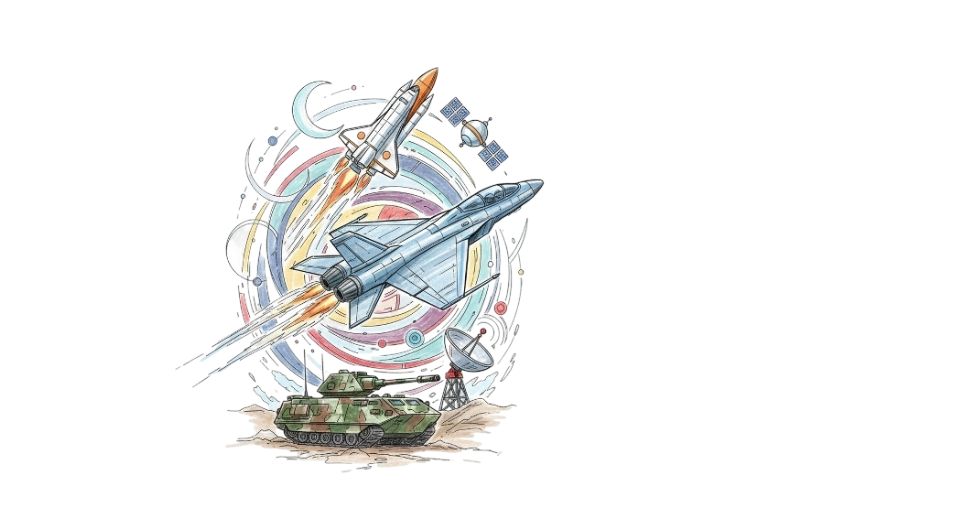

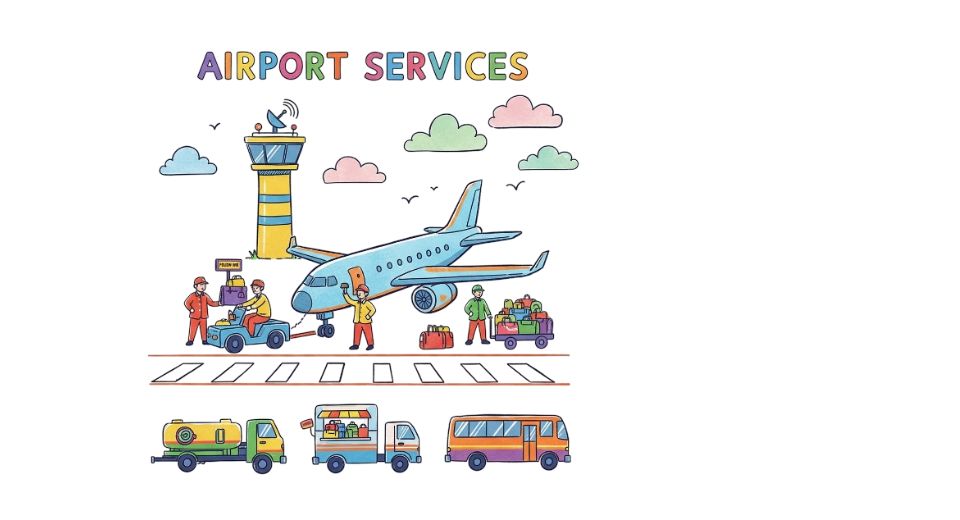
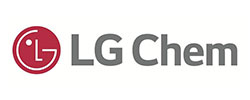

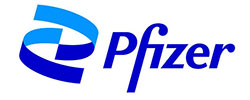

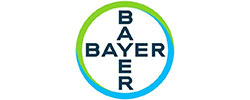


 US: +1 3023308252
US: +1 3023308252






